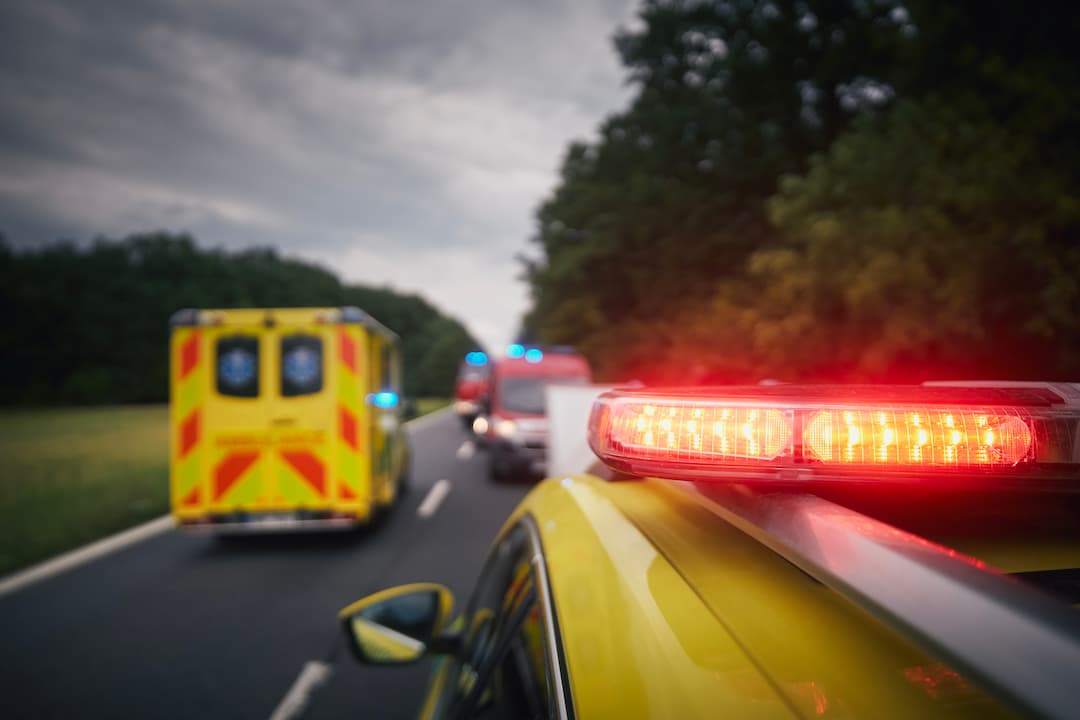

When a fire breaks out on a construction site, things can spiral out of control in no time, putting lives, property, and business operations at serious risk. The first few minutes are absolutely crucial. How your team responds during this window can make all the difference between keeping the situation under control or facing a disaster.
This guide offers an emergency response checklist filled with practical advice, expert insights, and clear instructions to ensure your team stays safe, assists emergency responders effectively, and reduces damage as much as possible.
Fires can grow rapidly, doubling in size every 30 to 60 seconds, especially in places like industrial or construction sites where flammable chemicals, heavy machinery, and tight spaces are common.
In those critical first moments:
Sites that have pre-established evacuation routes, clearly marked exits, and trained fire wardens can achieve evacuation times that are 30 to 50% faster than those that are unprepared.

Immediate action is key. The quicker your team acts, the better the chances of reducing injuries and limiting fire damage. Remember it takes approximately 9 minutes for the fire brigade to respond to a fire.
Action Steps:
Pro Tip: Assign fire marshals to oversee each area of the site. Their job is to make sure everyone exits quickly and no one gets left behind. You might consider using fire extinguishers, but only if the fire is small and manageable. Never put your safety at risk.
Once everyone is safely evacuated, the next step is to focus on headcounts and ensuring everyone’s safety.
Here’s what to do:
Expert Tip: Implement a “buddy system” during drills. Pairing up employees helps ensure that everyone is accounted for.
Your responsibilities will transition from evacuation to coordinating and communicating with fire services.
Here’s what you need to do: Designate a site contact or safety officer to welcome the emergency responders and give them a clear briefing. Provide essential site information, including:
Pro Tip: Utilise visual aids like maps or digital site plans to help responders navigate more quickly than just verbal descriptions.
After ensuring everyone is safely evacuated and handing over to the responders, the next steps are all about managing the scene effectively.
Here’s what to do: Action Steps:
Expert Tip: Having pre-prepared incident report templates can really help you save time and ensure you don’t overlook any important details.
Once the fire has been extinguished, it’s time to shift gears and focus on recovery and learning. Start with a post-incident debrief by talking about what went well, what didn’t, and where you can improve. Don’t forget to inspect all equipment and systems; make sure to replace or repair fire extinguishers, alarms, and personal protective equipment (PPE). It’s also crucial to provide support to employees who were affected by offering medical care and mental health counselling, as workplace trauma can be quite common after a fire. Update your training and procedures by incorporating the lessons learned into fire drills, site safety plans, and emergency checklists.
Pro Tip: Keep a record of the lessons learned in a fire safety knowledge repository that everyone can access. This will help strengthen overall preparedness for any future incidents.
In the first few minutes, the focus is all about ensuring life safety, effective communication, and smooth coordination. Taking immediate action, rather than just investigating, can really help stop a fire from getting worse. Regular fire drills, thorough staff training, and clear communication are key to saving lives and reducing property damage. Remember to always treat every fire alarm as if it’s real during drills. This helps reinforce a quick, instinctive, and coordinated response.
When it comes to industrial, construction, or corporate environments, having a fire emergency plan in place is essential. The more your team practices, the more their reactions will become second nature when the pressure is on.
If you are looking for fire equipment that can protect your site, then we have the solution for you. The Defender Polaris system is a fully wireless fire and first aid alert solution supporting up to 250 devices. Backed by years of development and client input, it offers full system visibility through the Defender Asset Management Portal, which tracks connectivity and battery levels to maintain 100% functionality. Defender also produces high-quality fire and safety trolleys and stations, designed for quick response and easy access to essential fire equipment when it matters most. Speak with our team of experts for more information.

